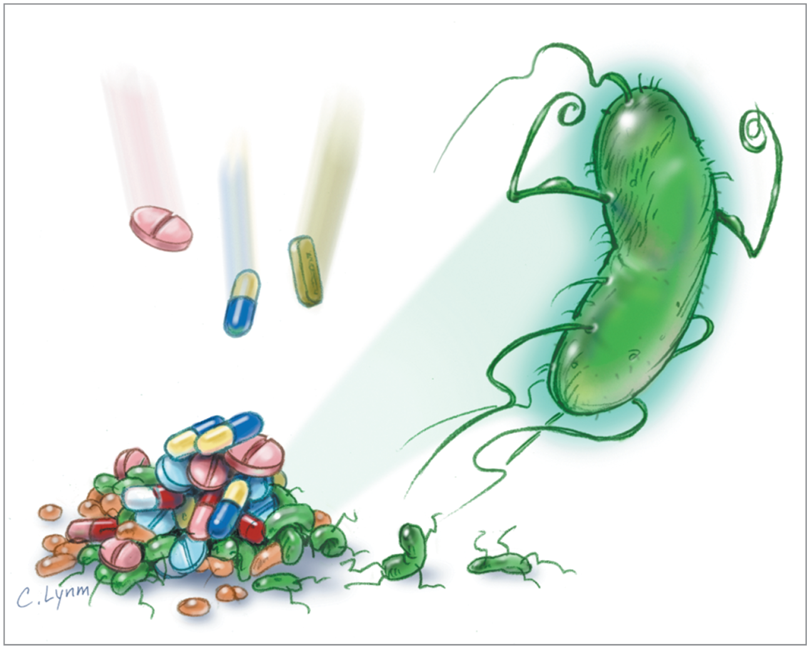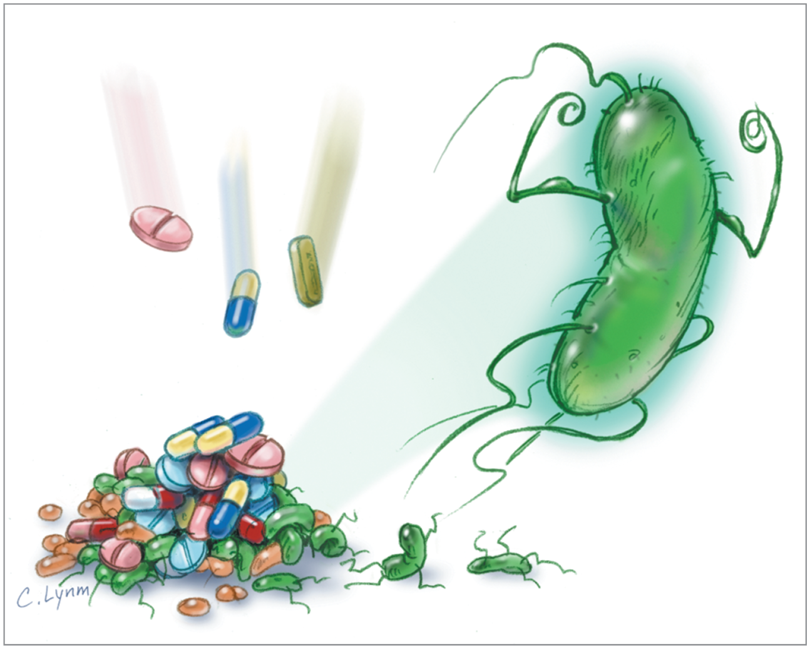During the first year of the pandemic, more than 29,400 people died from antimicrobial-resistant infections commonly associated with healthcare.
Of these, nearly 40% of the people got the infection while they were in the hospital.
JAMA Network
Bridget M. Kuehn, MSJ
August 23, 2022
Site editor:
Joaquim Cardoso MSc.
Transform Health . Institute
antimicrobial resistance unit
August 27, 2022
llnesses and deaths caused by hospital-acquired antimicrobial-resistant infections increased by 15% each during the first year of the COVID-19 pandemic, according to a special report from the CDC.
The new data mark a significant setback from the CDC’s 2019 report, which heralded a 27% reduction in antimicrobial-resistant infections in hospitals between 2012 and 2017.
Conversely, the new report documents a 78% surge in carbapenem-resistant Acinetobacter infections and a 60% increase in antifungal-resistant Candida auris infections between 2019 and 2020.
- Infections with carbapenem-resistant Enterobacterales, extended spectrum β-lactamase–producing Enterobacterales, and multidrug–resistant Pseudomonas aeruginosa each increased by about one-third during the same period.
- Vancomycin-resistant Enterococcus infections increased by 14%,
- and methicillin-resistant Staphylococcus aureus infections increased by 13%.
Data on 9 other resistant microbes were unavailable because of pandemic-related delays or disruptions.
Conversely, the new report documents a 78% surge in carbapenem-resistant Acinetobacter infections and a 60% increase in antifungal-resistant Candida auris infections between 2019 and 2020.
According to the report, a host of factors likely contributed to a reversal in progress against antibacterial-resistant infections, including
- large numbers of sicker patients,
- staff shortages, and
- shortages of protective equipment.
In another study, nearly 80% of patients with COVID-19 received antibiotics between March and October 2020, with most starting the medication on their first day of admission.
nearly 80% of patients with COVID-19 received antibiotics between March and October 2020, with most starting the medication on their first day of admission.
The CDC report suggested that such high level of use may reflect how difficult it can be to distinguish COVID-19 from community-acquired pneumonia or fungal infections.
The CDC report suggested that such high level of use may reflect how difficult it can be to distinguish COVID-19 from community-acquired pneumonia or fungal infections.

The pandemic also disrupted some infection surveillance and treatment programs.
For example, the report noted that many public health departments redeployed staff and resources from sexually transmitted disease programs to COVID-19 efforts, and laboratories experienced shortages of testing supplies.
For example, the report noted that many public health departments redeployed staff and resources from sexually transmitted disease programs to COVID-19 efforts, and laboratories experienced shortages of testing supplies
“This setback can and must be temporary,” Michael Craig, MPP, director of CDC’s Antibiotic Resistance Coordination & Strategy Unit, said in a statement.
“The COVID-19 pandemic has unmistakably shown us that antimicrobial resistance will not stop if we let down our guard; there is no time to waste.”
“The COVID-19 pandemic has unmistakably shown us that antimicrobial resistance will not stop if we let down our guard; there is no time to waste.”

To rebound from the recent setback, the CDC recommends a multipronged approach.
- The agency said it plans to enhance national systems for sharing information and ensuring uninterrupted access to laboratory supplies and equipment for patient care and infection control.
- Clinicians are encouraged to follow the core elements of antibiotic stewardship and participate in infection control training such as Project Firstline.
The authors urge health care facilities to monitor their wastewater for antibiotic-resistant microbes to identify cases quickly and prevent spread.
The CDC also said it plans to expand the capacity of the National Wastewater Surveillance System, which it has used to help provide early warning of COVID-19 surges.
The CDC also plans to partner with other agencies like the US Food and Drug Administration to develop new antibiotics, decolonization approaches, and more vaccines.
The CDC also said it plans to expand the capacity of the National Wastewater Surveillance System, which it has used to help provide early warning of COVID-19 surges.
The CDC also plans to partner with other agencies like the US Food and Drug Administration to develop new antibiotics, decolonization approaches, and more vaccines.
Originally published at https://jamanetwork.com
Names mentioned
Michael Craig, MPP, director of CDC’s Antibiotic Resistance Coordination & Strategy Unit












